- Home
- Bushwalking
- Bulgandry
Bulgandry Aboriginal Art Site
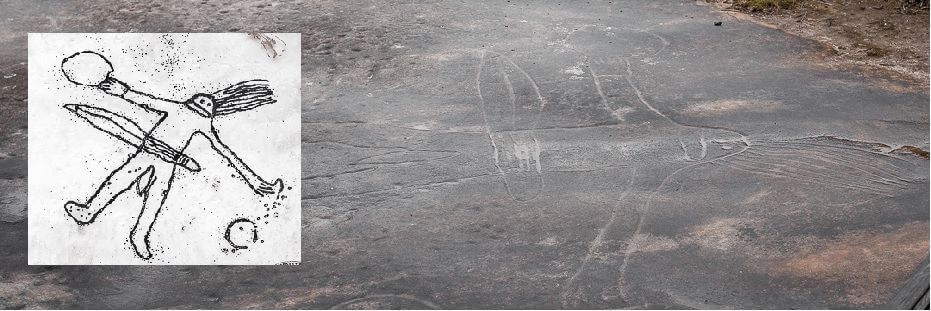 Bulgandry man
Bulgandry manTEN-MINUTE WALK – SUITABLE FOR PRAMS AND WHEELCHAIRS BUT A BIT BUMPY
Bulgandry Aboriginal art site is a beautiful site with well-preserved carvings.
It’s worth visiting.
Walk along the relaxing footpath in the bush and view some of the clearest and sharpest Aboriginal engravings on the Central Coast.
Etchings of
kangaroos, fishes and more cover the entire site.
It makes for a great outing with small children. Schools often organise excursions here. The walk to the engravings is only short and you can clearly identify the images—a fabulous way for kids to learn about Aboriginal art.
Walking to Bulgandry Aboriginal Art Site
The walk to Bulgandry Aboriginal engraving site takes 10 minutes and follows a well-maintained footpath. The walking track is suitable for prams and wheelchairs (could be a little bumpy).
You’ll see wildflowers in early spring, scribbly gums and beautiful valley views.
Read the signage along the track and learn about the Aboriginal people and engravings.
One signage tells that ‘Bulgandry’ means ‘boomerang in hand’. You’ll recognise the Bulgandry man etched on the rock. He wears an impressive headdress and holds an object that looks like a small boomerang. The Bulgandry man represents an ancestral hero—a fascinating etching.
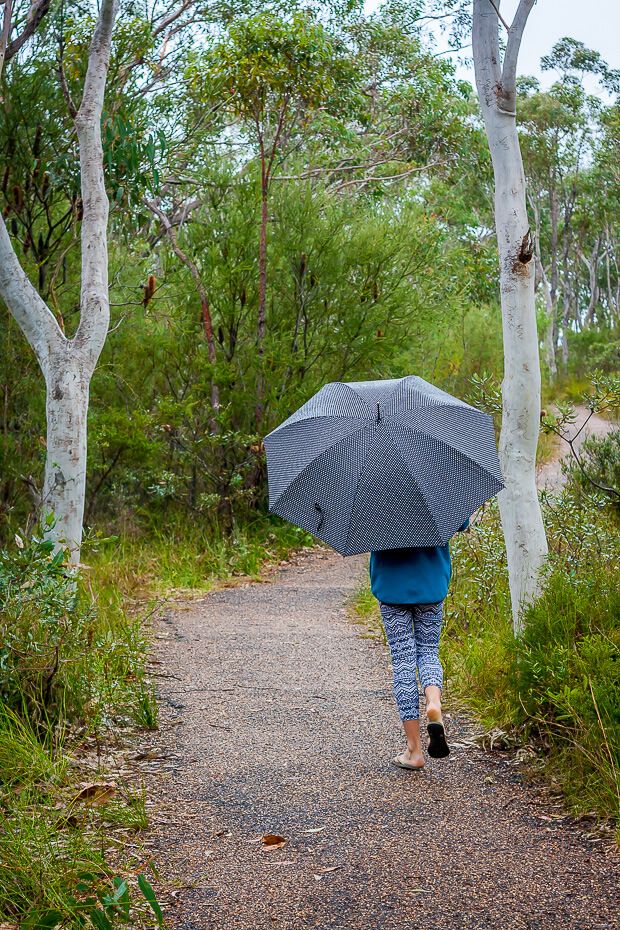 Well maintained footpath
Well maintained footpath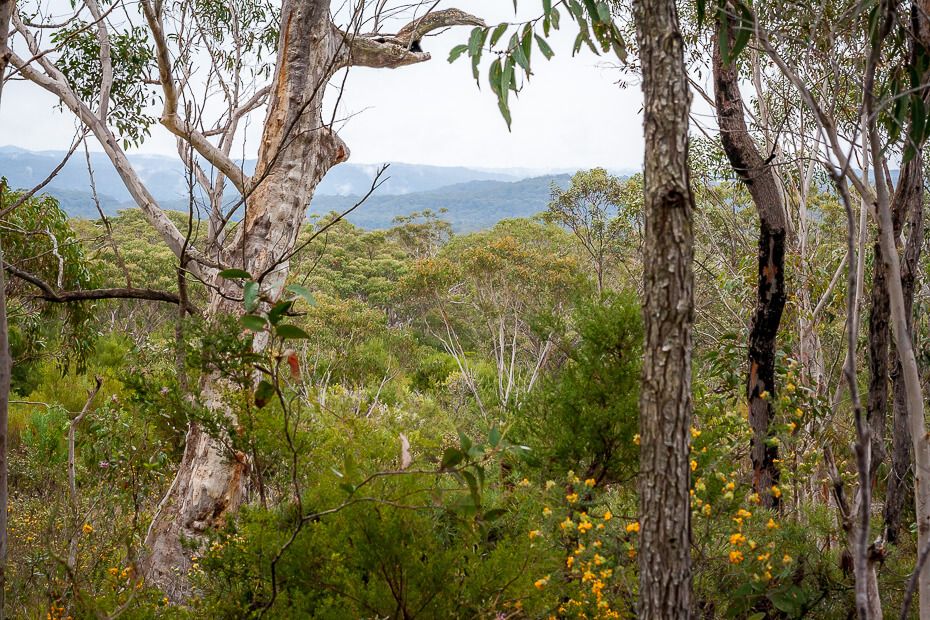 Lovely valley views
Lovely valley views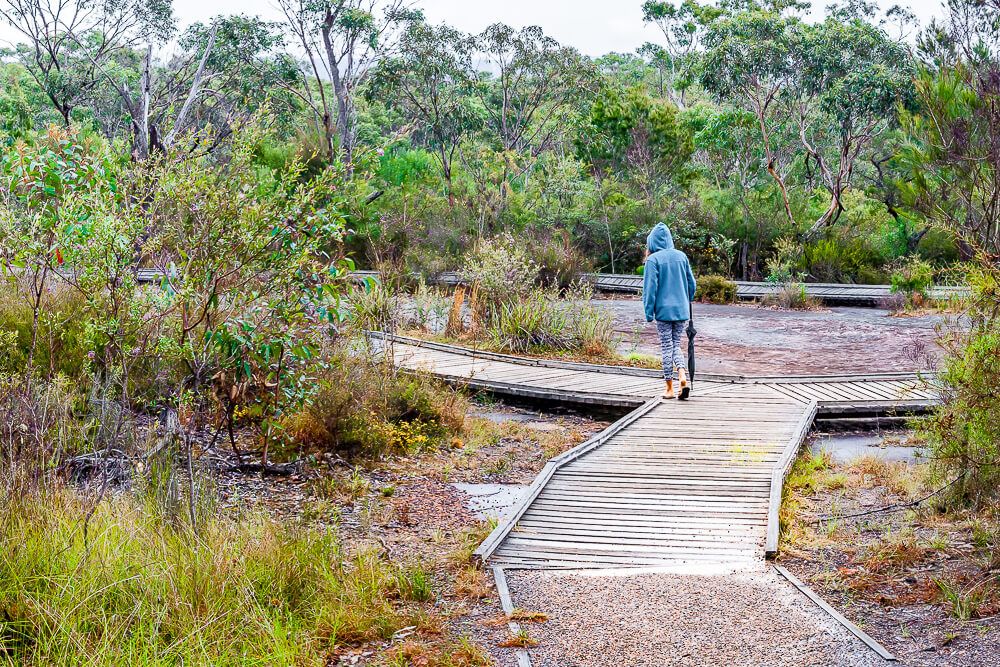 A boardwalk surrounds the site
A boardwalk surrounds the siteBulgandry Aboriginal Engravings
The ten or so Aboriginal engravings are dispersed on a large, flat sandstone rock at the end of the walking track. You can’t miss it. Follow the wooden pathway around the carvings. You can clearly see the etchings from the pathway.
The images depict people and animals like kangaroos and dolphins.
There's also the Bulgandry man with the headdress holding objects and possibly a boomerang in his hands and a club across his waist.
You can also see cavities in the rock which are axe grinding grooves. That's where Aboriginal people sharpened their stone tools by rubbing the stone axe on the surface of the rock.
Signs next to the figures describe what they depict. Some are easy enough to guess but others less so.
To help preserve the site:
- stay on the boardwalk
- don’t try to re-groove or draw over the images with chalk or anything else
- don’t put water or sand on the etchings
Hawkesbury sandstone is soft and easy to erode, so it would damage the engravings plus it’s a criminal offence. No descendants of Aboriginal artists can re-engrave figures today.
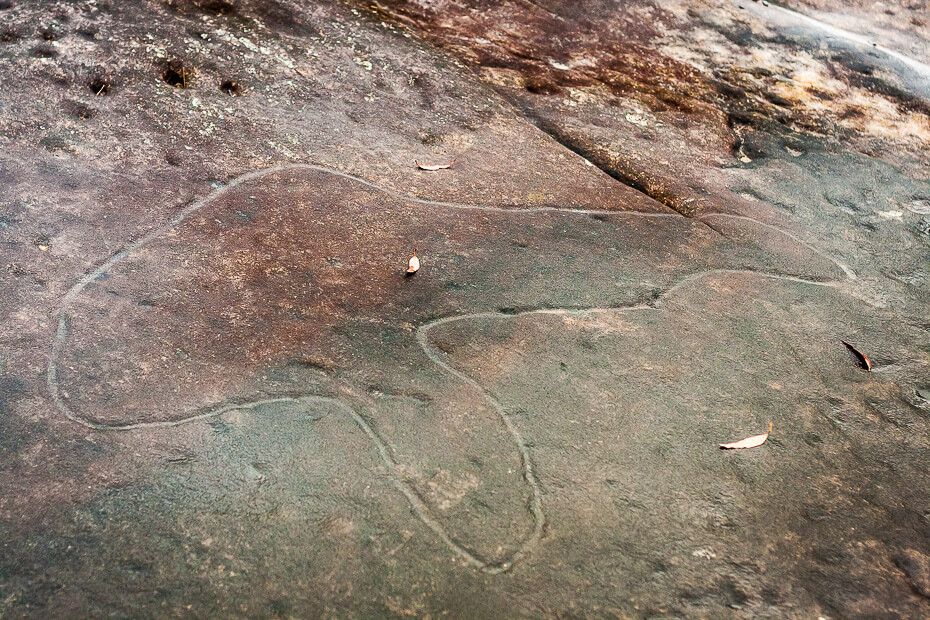 A fish
A fish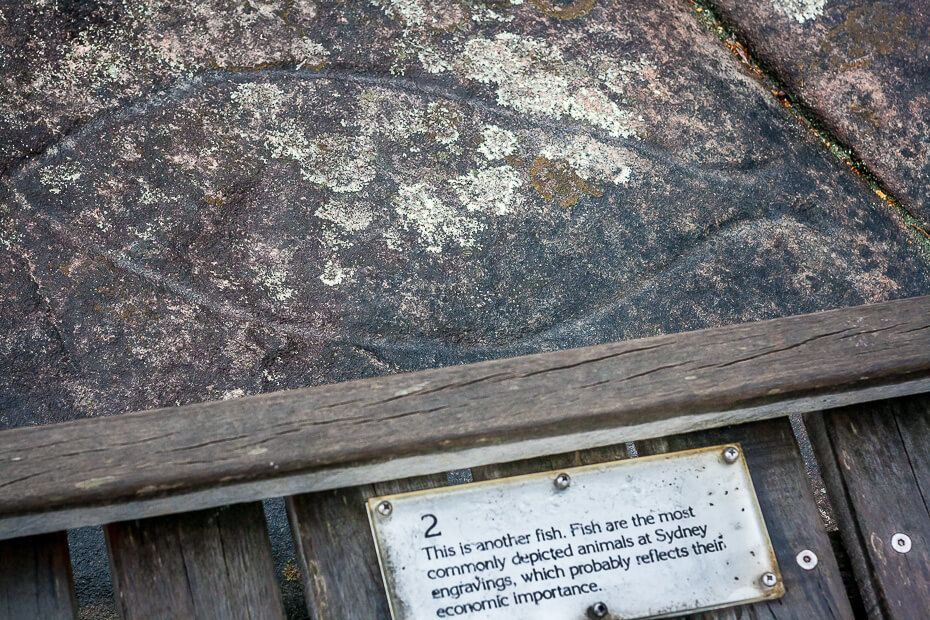 Another fish
Another fish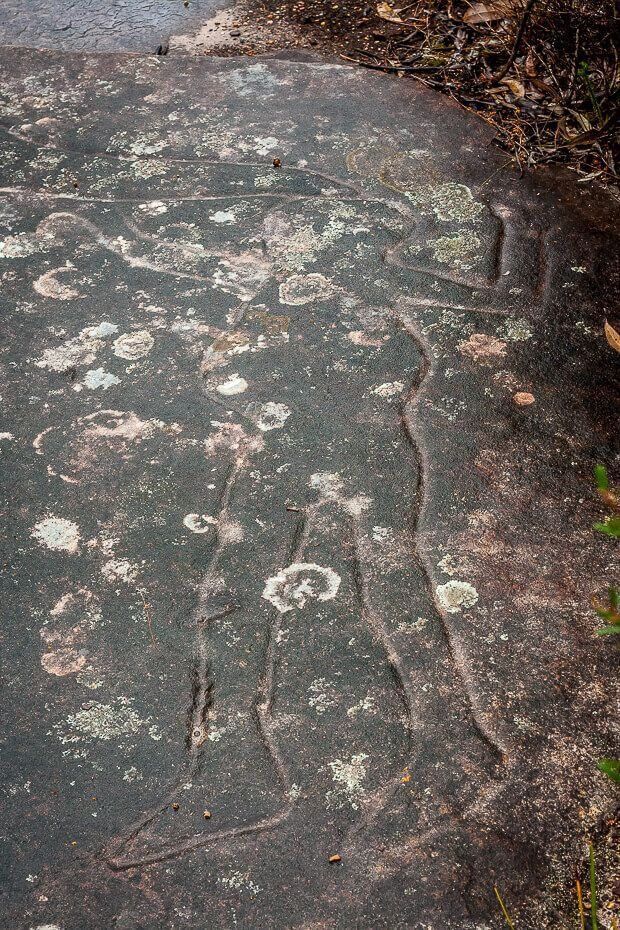 A small person next to a kangaroo's tail
A small person next to a kangaroo's tail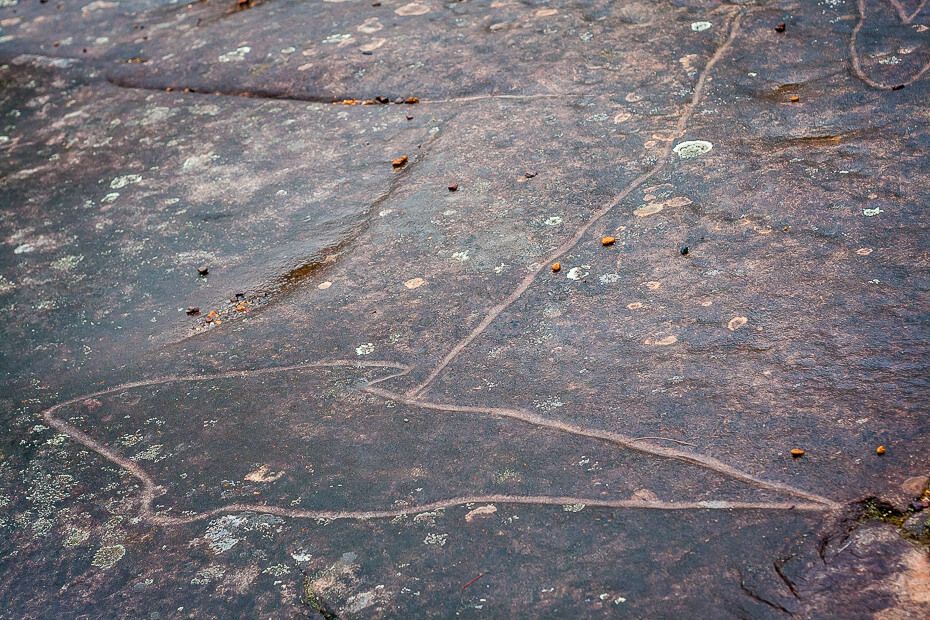 A fish being speared
A fish being speared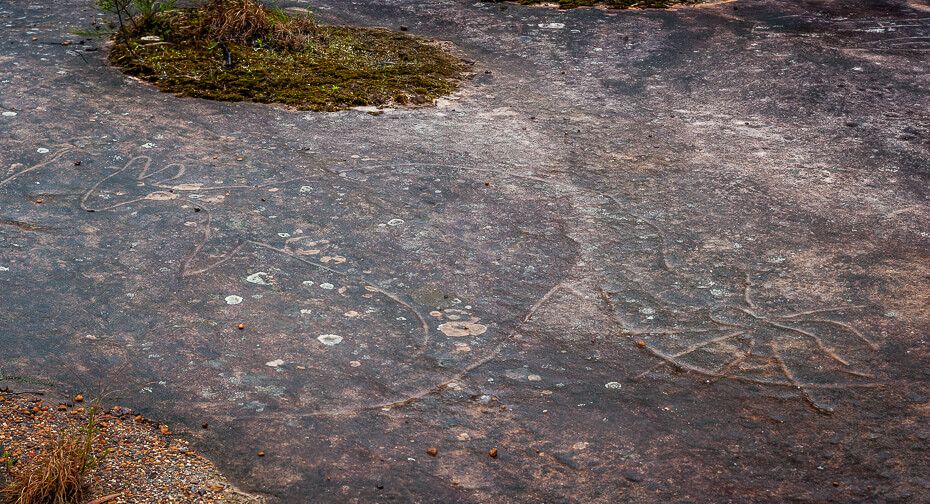 A life-sized kangaroo with an octopus or spider on its tail
A life-sized kangaroo with an octopus or spider on its tail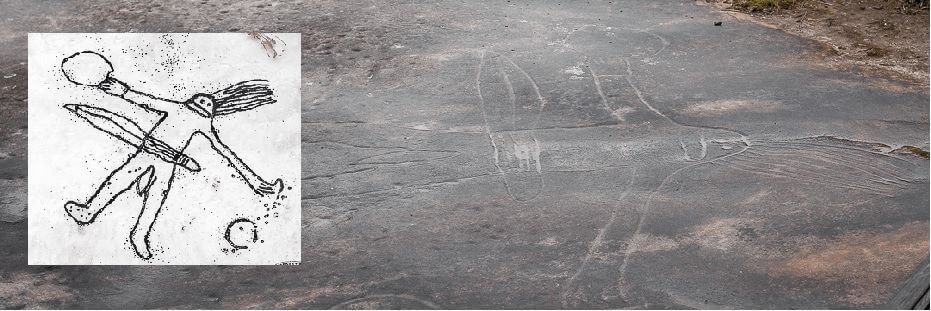 The Bulgandry man
The Bulgandry manAbout Sydney Rock Engravings
The carvings
can’t be dated exactly as rock art is difficult to date, but it’s believed they
were etched at least 200 years ago and some more than 2000 years ago. It’s
amazing that the figures are still so well preserved today.
Sydney Rock Engravings generally show a simple contour of a figure, mostly of people, animals and ideograms. The figures are often life-size, and some measure up to 20 metres. You’ll see a couple of life-size figures here.
To etch the figures, Aboriginal people would first draw the outline on the rock surface with charcoal or stone. Then they would peck a series of holes along the contour with a hard-pointed rock. Finally, they would join the holes by rubbing away the rock.
We don’t really know what the etchings mean. They were perhaps created and routinely re-grooved as part of sacred ceremonies and rituals.
Getting There
Bulgandry Aboriginal art site is located an hour north of Sydney.
- From Sydney, drive up the Pacific Motorway M1 (F3)
- Take the Gosford & Woy Woy exit.
- Continue on Central Coast Hwy for 1.6 km.
- Turn right onto Woy Woy Rd (you’ll see Bella Vista Motel at the turnoff).
- Continue along Woy Woy Rd inside Brisbane Water National Park for about 3 km.
- You’ll see (hopefully) a poorly visible signpost on the right side of the road. That's what it looks like...
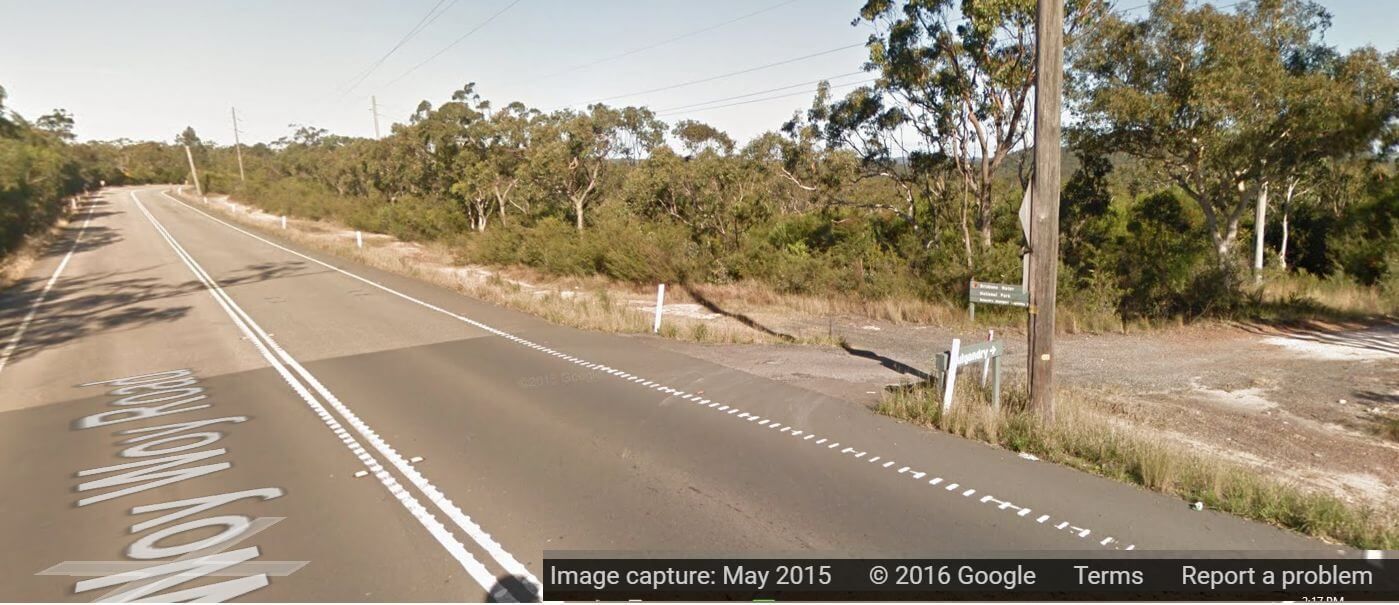
Drive to the carpark and follow the walking path. Parking is free
Suggested Activities Close By...
- Have a picnic at Staples Lookout – located about 2 km away on Woy Woy Rd.
- Mountain bike or walk to Mount Wondabyne, the highest peak in Brisbane Water National Park, and climb to the summit. Follow Tommos Loop, Tunnel Trail and Rocky Ponds Trail from Staples Lookout – about 10 km return.
- Walk to Kariong Brook Falls from Staples Lookout. Follow Tommos Loop Firetrail and Hawkesbury Track – 5.8 km return, 2hrs 30 min.
- Have a coffee and food at Waterfall Cafe. It’s very relaxing there. Walk around Mt Penang Gardens. Located only 6 min away – 49 Parklands Rd, Somersby.



